#Collaboration for Revit
Text
Major Differences Between Traditional 2D CAD Design and BIM Implementation

As a highly qualified expert in architecture and expertise in Technology, IoT, and the BIM process from reputable institutions, a former Multidisciplinary Design Manager of a reputable firm with a strong reputation for delivering high-quality projects that offer a wide range of services in engineering, project management, and design, I can precisely provide an explanation of the major differences between Traditional 2D CAD Design and the implementation of BIM (Building Information Modeling), as well as the problems and causes of sticking with 2D traditional CAD design for real estate developers or construction companies in the AEC industry:
Major Differences between Traditional 2D CAD Design and BIM Implementation:
Traditional 2D Design:
Involves creating separate 2D drawings for different disciplines (e.g., architectural, structural, MEP).
Lacks coordination and integration between drawings, leading to potential clashes and errors during construction.
Requires manual coordination and cross-referencing of drawings, increasing the likelihood of discrepancies and rework.
Limits visualization and understanding of the building design in a 3D context, hindering communication and decision-making.

There were numerous or thousands of clashes like this throughout the entire construction due to the lack of BIM implementation and the requirements from stakeholders since the beginning. This lack of coordination and communication resulted in delays, higher costs, and frustration among the project team. It became evident that without proper BIM implementation and early stakeholder involvement, the project was bound to encounter various challenges and setbacks. Ultimately, the significance of utilizing BIM and involving stakeholders from the start was undeniable, and valuable lessons were gained for future projects.
Why demolish when you can always prevent this small problem during the design stage with BIM in this 21st century? Demolition is not only costly and time-consuming but also wasteful. By utilizing Building Information Modeling (BIM) technology during the design phase, potential issues can be identified and resolved before construction even begins. This proactive approach not only saves resources but also ensures a smoother building process with fewer setbacks. In the 21st century, with advanced processes like BIM at our disposal, there is no excuse for overlooking preventable problems that may lead to demolition.
BIM Implementation:
Utilizes a single, coordinated 3D model that integrates architectural, structural, and MEP elements.
Enables real-time collaboration and data sharing among project stakeholders, improving coordination and reducing conflicts.
Facilitates automated clash detection, quantity take-offs, cost estimation, and scheduling through 4D and 5D simulations.
Enhances visualization, analysis, and communication of building designs, leading to more informed decision-making and better project outcomes.
Major Problems and Causes of Sticking with 2D Traditional CAD Design:
Lack of Coordination: Traditional 2D design often results in fragmented drawings that lack coordination between disciplines, leading to clashes and coordination issues during construction.
Increased Rework: Manual coordination and cross-referencing of 2D drawings can lead to errors, discrepancies, and rework, impacting project timelines and budgets.
Limited Visualization: 2D drawings limit the ability to visualize and understand the building design in a holistic 3D context, hindering communication and collaboration among project teams.
Inefficient Data Exchange: Traditional CAD design may involve manual data transfer and conversion between different software platforms, leading to data loss, inaccuracies, and inefficiencies in information exchange.
Real estate developers and construction companies in the AEC industry may face challenges and inefficiencies by sticking with 2D traditional CAD design, including increased coordination issues, rework, limited visualization capabilities, and inefficient data exchange. Embracing BIM implementation can address these issues by providing a collaborative, integrated, and data-rich environment that enhances project coordination, communication, decision-making, and overall project efficiency in the construction industry.
Sonetra KETH (កេត សុនេត្រា)
Architectural Manager/Project Manager/BIM Director
RMIT University Vietnam + Institute of Technology of Cambodia
#Sonetra Keth#Architectural Manager#Architectural Design Manager#BIM Director#BIM Manager#BIM Coordinator#Project Manager#RMIT University Vietnam#Institute of Technology of Cambodia#Real Estate Development#Construction Industry#Building Information Modelling#BIM#AI#Artificial Intelligence#Digitalization#Technology#VDC#Virtual Design#IoT#Internet of Things#Machine Learning#Drones and UAVs#C4R#Collaboration for Revit#Cloud Computing and Collaboration Platforms#NETRA#netra#នេត្រា#កេត សុនេត្រា
0 notes
Text

Autodesk Dublin: Where Symetri Empowers Your Business Growth.
Autodesk Dublin, At Symetri we work with you to tailor digital BIM, product design and lifecycle solutions to help you work smarter and do more with less. As a trusted partner for our customers, we constantly seek to challenge people to work smarter for a better future. With our expertise, leading-edge technology and services we always strive to enable our customers to gain an increased competitive advantage. That’s why our partnerships are long lasting. Symetri is Ireland’s preferred trusted Autodesk Partner with offices in Dublin & Limerick
#Autodesk Dublin#Autodesk Ireland#Bim Collaborate Pro#Autodesk Build#Autodesk Construction Cloud#Autodesk Docs#Autodesk Fusion 360#Autodesk Inventor#Autodesk Revit#Autodesk Vault
0 notes
Text
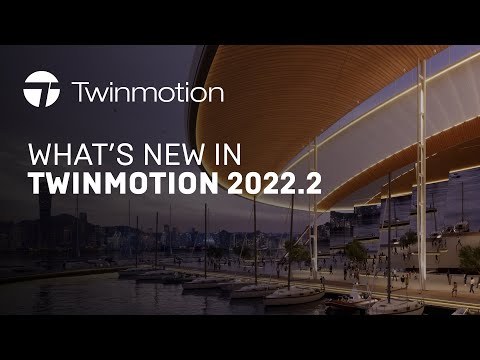
The Most Realistic Architectural Visualization Tool on the Market.
Twinmotion can import your data in a matter of minutes, with no detail loss. Once linked, you can continue to refine in your design software before sending those changes to Twinmotion with a single click.It comes with 10,000 high-quality smart assets, which can be dragged and dropped into your scene. The large library of manmade and natural physically based materials – everything from trees growth, doors opening, people movement, cobblestones and non-slip flooring, to water, sand, and mud - it's easy to get the look you want.
#Twinmotion#Twinmotion for Revit#Twinmotion revit#PDM product data management#AEC Collection#Autocad electrical#Autodesk Assemble#BIM Collaborate Pro#Autodesk Build#Autodesk Construction Cloud#Autodesk Docs#Autodesk software#Autodesk Takeoff#Inventor#Autodesk Inventor#Autodesk Support
0 notes
Note
Why are people mad at the barbie promo?
it's not a standard promotional cycle for a film that happens to involve mattel's famous toy. it is a massive brand push to revitalize a product for a new age, and the movie is the commercial. it is not normal to have promotion that includes collaborations with: airbnb, hair tools, many makeup companies, rollerskates, forever21, canned lemonade, ruggable, toothburshes, skincare, shoe lines, gap, pacsun, OPI etc etc etc............... like i'm going to go see the movie! it will in all likelihood be fun and enjoyable. but this rollout is explicitly mattel's first phase in what they hope is a HUGE endeavor to make "cinema" out of every one of their products, as a way to get more people to buy these products. regardless of how the barbie movie turns out, it is not actually good for anyone to have a failing film industry turn to self-cannibalizing commercial products for story. i hope everyone has a good time! i don't give a fuck if you want to buy a hot pink dress and go with your girlfriends and revel in your #womanhood or whatever. but the degree to which mattel has already had input in the actual movie + made people think that their massive push of product is some sort of cool innovative trendy Promotion (while having plans to do this to. 45 other producuts) is like. lol oh boy.
#like who cares no one is going to yell boo at you and rip your fun barbie branded stuff out of your hands#but don't pretend it's like.#cool and new fun marketing for a regular ole movie#if you factor this in with the current state of the Movies.... bruh. el oh el!!!!!!#so like do whatever you want to do but don't act like people critiquing the rollout are like#antifeminist or something for pointing out some#um. troubling details
4K notes
·
View notes
Text
#Learn how 50K+ Professionals in 50+ Countries save on average 4-6 hours a week per user. Navigate Add-on for Autodesk Revit gives you faster#better collaboration and control over your projects.
1 note
·
View note
Text


HEARTSTEEL BIO & MEMBERS
HEARTSTEEL is a virtual pop group featuring reimagined versions of League of Legends champions Kayn, Ezreal, Sett, Yone, K’Sante, and Aphelios. A group of dynamic daredevils dedicated to unapologetic individuality and bold, creative expression, HEARTSTEEL is set to
blaze a path to success on their own terms after each member's failed solo careers. The group’s personality and sound draws inspiration from modern music collectives, and a range of influences from across genres and eras, culminating in a bold and fearless one-of-a-kind identity. The band’s debut single, PARANOIA, pushes the boundaries of pop music with an eclectic infusion of hip hop and electronic influences and relentless, playful energy.
SETT is the founder and co-leader of HEARTSTEEL, who started the band after being dropped from his first label. Inspired by the bold, aggressive styles of hip-hop, Sett designed the group's outfits for the PARANOIA music video and collaborated with ØZI on his rap verse.
As HEARTSTEEL’s co-leader, K'SANTE uses his talents as a singer and creative director to shape the band’s vision. In collaboration with Tobi Lou, K’Sante’s emotionally-attuned lyricism draws inspiration from R&B and hip-hop.
EZREAL first rose to stardom through a manufactured bubblegum-pop hit. As part of HEARTSTEEL, he’s found new freedom in controlling what he creates. Collaborating with BAEKHYUN of EXO, this charming vocalist takes inspiration from his fans around the world.
KAYN is a wildcard, channeling his rebellious streak through Rhaast, his onstage alter-ego. Kicked out of his former band, the multi-genre rapper and instrumentalist leans into everything new and experimental. Collaborating with Cal Scruby, Kayn pushes the envelope wherever he is.
As HEARTSTEEL’s primary instrumentalist and lyricist, APHELIOS brings a quiet genius to the band’s songwriting and composition. Though he rarely speaks, his pursuit of musical perfection guides the group. With his array of instruments (and a little help from his twin sister Alune), Aphelios aims for new creative heights.
Once a producer on international pop hits, YONE grew disillusioned with the music industry’s idea of success. Now revitalized as part of HEARTSTEEL, Yone brings an analytical focus and sharp production skills to the band. His passion for electronic music and meticulous attention to detail shapes their sound.
#sett#k'sante#ezreal#kayn#aphelios#yone#heartsteel sett#heartsteel k'sante#heartsteel ezreal#heartsteel kayn#heartsteel aphelios#heartsteel yone#heartsteel#league of legends#alune#baekhyun#tobi lou#cal scruby#øzi#league of legends skins#riot games music#league of legends music#official
668 notes
·
View notes
Note
The rapresentation of abusers in helluva boss is something that particularly frustrates me, Stella in particular, it seems to be done just to victimaze certain characters not to show the complex dynamics of those relationships. It seems to me the writers aren't mature enough to handle these topics properly.
Abuse: The Heart of Vivienne Medrano
Christmas 1962, a man renowned the western world over for his revolutionary approach to animation sat in a withering melancholy as he watched what could only be called a cinematic masterpiece based on a novel classic. Walt Disney, now in the twilight years of his life, saw the walls closing in and his legacy coming to a close. This man, who pioneered the animated feature film, saw his greatest accomplishment as his greatest obstacle. The man responsible for the tales brought to life of Cinderella, Snow White, Pinocchio, and Dumbo felt trapped in his achievement. “I wish,” Walt lamented, “I could make a picture like that.”
To Kill a Mockingbird was a piece that challenged its audience. The discussion of a white man defending a black man in southern America, decades before the civil rights movement. The movement that, at the time the movie hit cinemas, was in its infancy. Released during the height of the historically revisionist counter movement taking place to combat the rising push of African Americans towards their human rights. The last film Walt Disney ever saw the production of before his death in 1966 was The Jungle Book, a movie that was the epitome of “Safe” and a message that upheld the status quo of segregation.
It wasn’t until 1972 that the media of animation became raucously adult with those political and challenging concepts Disney felt were unattainable. Fritz the Cat was an X-rated animated film composed of vignettes that were unapologetically perverse, violent, and aggressively political. Critical of politicians and the police with a sympathetic if exploitative lens towards the LGBT and racial minority communities Brooklyn-based director Ralph Bakshi grew up around. Bakshi proved that animation was not strictly a child-friendly media and that adult animation could be financially and critically successful.
(For more on Ralph Bakshi's career and animation history)
If one has ever had the opportunity to listen to a Brad Bird (director of Ratatouille and The Incredibles) interview, it is clear to see that the success of Bakshi was generally quite limited. That animation is considered a genre and not a medium of art has resulted in animated films being knee-capped in the box office. There is far more potential to animation, highlighted by Howard Ashton in his collaboration with Disney studios during the Renaissance. Responsible for resurrecting the feature-length animated movie through The Little Mermaid and credited for the monumental success of Best Picture Award winner Beauty and the Beast, Ashton once said that the potential animation was ideal for musical theatre. The limitless possibilities given the medium gave the possibility of introducing Broadway to the common folk who didn’t live in New York and otherwise couldn’t afford the theater. He was quoted saying that live action musical films were “an exercise in stupidity,” highlighting the freedom that comes with a blank page.
However, the success of animation, and media in general, comes down to the message the media wishes to send. The reason the Disney Renaissance films have enjoyed their position as cornerstones of pop culture and creativity was because it did introduce the artform of musical theater into homes and made them readily accessible to everyone with an even heightened sense of fantasy that revitalized Walt’s ethos of making films for the child in everyone.
With Bakshi, it was the loud and violently political message of a revolution taking place. This continues in adult animation with the Simpsons, a series critical of hyper-capitalist America and the fallout of Reagan’s economic disaster that the effects of which are still being felt today and a satire of toxic masculinity and abusive family dynamics.
So, ultimately, the value of a piece of media is a cross between its social artistic influence and the message the creators are intending to make. While Medrano’s influence on the field of indie animation is often mischaracterized as a “pioneer”, the fact is that indie animation and pilots have existed and been funded before Spindlehorse existed. It is simply that Medrano has had the spotlight handed to her for the myth surrounding the production and subsequent success of his indie projects. Artistically, her influence can be summarized as a double-edged sword. For some, she is the motivation for inspiring artists to connect with the community to one day, hopefully, create their own work. On the other hand, she is the cautionary tale of why investing in an indie project is a financial risk for an audience member and a risk to the community as a whole that poses a real danger of making the indie sphere financially cannibalistic, as her public persona is off-putting to “normies” and her show is simply not good.
Much like Disney, the man in 1962, and Disney the company circa 2023, the revolution of animating "because you can" loses its luster very quickly. Without something profound to say, an entire company, regardless of its social influence, can fade into irrelevance despite still being "successful". The story of Disney is a cautionary tale for Indie animation as a whole and Spindlehorse in specific.
And that is the other axis on this chart. Her narrative lacks a message worth telling, and that’s very much due to her not having anything worthwhile to say.

“I really liked when things and shows and stories allow the characters to be flawed, and allow them to grow and to change. And I think that’s something that’s, you know, the world is not black and white. And I like things that explore the gray and that and the complexity, of life and mistakes and of things like that.” - Vivienne Medrano
It is not for want of mockery that I carefully transcribe Medrano’s words in her interview. To read the words aloud tells the story just as clearly as I have set out to do here. This is someone who is highly inspired by better media, who has ideas and a belief that she has something to say. But that is where the belief ends. There is no conclusion to that thought any more than there is one in the unfocused and run-on sentences she rambles along throughout the interview. She talks of “Things” without clarity, because she herself is a fundamentally incurious individual who has never once spent the time critically analyzing herself, let alone the work of others to better grasp what about it resonated with her. She merely consumes art insatiably and without any substance. Like a diet of fruit, it has a superficial veneer of positive value. Fruit would be considered healthy as it is “natural”. However, it is the nutritional equivalent of candy, lacking vital components that are necessary to sustain basic life, it is pure sugar. Her work, similarly, lacks any value of depth that would qualify as meaning.
Which comes back to what the message is in her work.
When it comes to others in the field of indie animation, Medrano does not have many friends. In response to the Lackadaisy situation, creator Tracy explained why she returned Medrano’s donation. For one, the donation was not Medrano’s money, but money she crowd sourced from her employees. While the $5k for the producer spot of the fundraiser would have not been a dent in her personal wallet, Medrano is so uninterested in supporting fellow creators while presenting an impression of camaraderie that she instead took money from the people she is in charge of the paychecks for to get her name in the credits of another creator’s work. In regards to why Medrano was declined her support, it was due to numerous individuals who had such an awful experience working for Medrano that they did not want her involvement associated with the project to any extent. When the money was returned, she made the situation extremely public and encouraged harassment by liking tweets attacking Tracy and the Iron Circus team.
A well-known member of Medrano’s crew, Hunter B, was leaked speaking crassly of other animation projects that were still in the process of production, met with support from other members in the discord. One of these creators being Ashley Nicoles from Far-Fetched. A former friend and creative partner on the Hazbin Pilot whose podcast streams featuring Edward Bosco and Michael Kovach single-handedly maintained interest in the show until the winter of 2021, free of charge. Ashley once spoke of how Medrano would speak disparagingly of an employee to her, saying that this individual was “Too unstable to work with”. Which, regardless of whether or not that is Medrano’s honest opinion, counts as defamation by an employer. It is the exact reason why most previous employers will not give a negative, detailed review of a former employee, maintaining instead to verify facts of the employment. If Erin Frost was more experienced and less involved in social media exposed culture, they could have easily sued Medrano and Spindlehorse for damaging their reputation in their field of employment.
Which circles back to Medrano’s self-assigned message of her show:
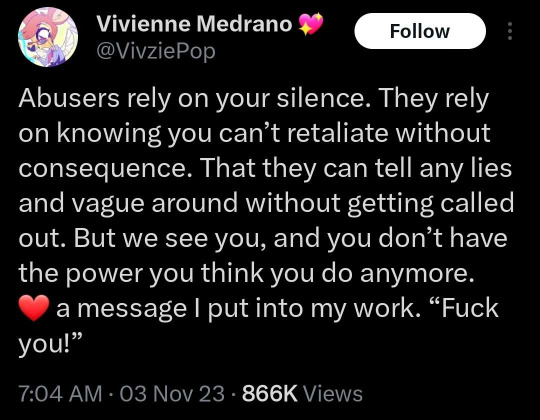
“Abusers rely on your silence. They rely on knowing you can’t retaliate without consequence. That they can tell any lies and vague around without getting called out. But we see you, and you don’t have the power you think you do anymore. A message I put into my work. “Fuck you!” - Vivienne Medrano
Medrano, who has vague and sub tweeted individuals like Lackadaisy Tracy, The Diregentlemen, Michael Kovach, and Ashley Nicoles. Medrano who has instigated and incited harassment campaigns knowing that no one can call her out without severe and relentless backlash from her cultish fanbase that she personally encourages through positive reinforcement of liking the tweets of fans. Medrano who relies on the silence of other creators in the field due to the fear of her ire collapsing their projects before they even have a chance to begin.
Vivienne Medrano with an extensive abusive history that continues to this day, has something to say about abuse.
What Medrano has to say about abuse comes from someone who has the position of superiority in all of her relationships, but feels like she’s the outcast and bullied loser. Her self insert that is repeatedly expressed in every character at one point or another is how easily they abuse those around them just because they can, but that the narrative justifies their “acting out” because they are sad. According to the National Coalition Against Domestic Violence, “An abuser externalizes the causes of their behavior. They blame their violence on circumstances.”
Indeed, the lists of abusive characteristics and traits, according to the National Coalition Against Domestic Violence, overwhelmingly encompasses the characteristics shown by characters like Loona, Blitz and Stolas that Medrano repeatedly has attempted to rationalize, justify and minimize. Which, “An abuser often denies the existence or minimizes the seriousness of the violence [including emotional and mental abuse] and its effect on the victim and other family members.”
It is not surprising, then, that the conversation of abuse in Helluva Boss is often infuriating. The narrative underplays the harm done by characters we are supposed to see as “good”. Not allowing for them to grow or change, but ignoring and minimizing the behavior, justifying it through circumstances and perpetuating the false belief that victims are not, themselves, abusers.
One of the first blog post rants I ever made about mental health and abuse was the affirmation that not all victims of abuse are survivors. I wholly stand by that. Victims of abuse perpetuate abuse. A victim and an abuser are one in the same, whereas a survivor is someone who has actually done the difficult work of being self-critical. And the one thing we all are very aware of is how much Vivienne Medrano rejects criticism.
#helluva boss critical#helluva boss criticism#helluva boss critique#vivienne medrano#vivziepop#vivziepop critical#spindlehorse critical#spindlehorse criticism#vivziepop criticism#helluva boss#perpetuating abuse#narcissistic abuse#abuse breeds abuse#essay writing
224 notes
·
View notes
Text
On November 20, news broke that the U.S. was exploring plans to exploit the gas fields off the coast of Gaza as part of an “economic revitalization plan.” While some took this to mean that these gas fields were an ulterior motive for the years of Zionist and U.S.-backed attacks on Gaza, the current assault should be understood as an escalation of an ongoing attempt to ethnically cleanse Gaza that is part and parcel of the Zionist settler-colonial and imperial project.
[...]
Besides its long-term goal of building a settler-colonial ethnostate, the Zionist project sustains itself as an imperialist proxy for the Western empire in the region. One important way it plays this role is through its involvement in exporting stolen gas to the European Union (EU) and by striking gas deals with local normalizing neighboring states, like Jordan, Egypt, and the UAE.
Twenty-five years ago, British Gas Group (BGG) discovered natural gas off the coast of Gaza between the Zionist-occupied Leviathan gas field and the Egyptian Zohr gas field. These fields have become known at Gaza Marine 1 and Gaza Marine 2, and are a tremendous point of interest for the Zionist state and its American sponsor, who seek to profit off of Palestinian natural resources in the Mediterranean Sea.
Most of Gaza’s energy and water is controlled by the Israeli occupation, and plans to introduce and maintain independent energy-producing infrastructure inside the Strip have continuously been thwarted by both the Palestinian Authority (PA) and the Zionist state. Instead, the Occupation, and to a lesser extent the PA, both benefit from stolen gas and desalinated water from Gaza’s shores while Palestinians in Gaza endure increasingly catastrophic energy crises.
Only a few months before October 7, Netanyahu announced approval for the development of this gas field in collaboration with the PA and Egypt. Right now, after more than 20,000 Palestinians had been killed by airstrikes or execution-style, 8,000 reportedly stuck underneath the rubble, hundreds kidnapped and tortured, tens of thousands injured, and a deliberate energy crisis in Gaza designed by the Zionist state to deplete life-saving infrastructure, energy giant Chevron resumed gas extraction from the Tamar and Leviathan fields to supply Egypt and Israeli settlers.
183 notes
·
View notes
Text

How did the idea for Brooklyn Bridge Park originated, and when was it established?
Brooklyn Bridge Park stands as a testament to urban revitalization and community-driven development, offering a picturesque oasis along the East River waterfront. The park's inception is rooted in a combination of civic activism, visionary planning, and the desire to transform a neglected industrial waterfront into a vibrant public space. In this article, we delve into the fascinating history of Brooklyn Bridge Park, exploring its origins and the journey that led to its establishment.
The Genesis of the Idea:
The idea for Brooklyn Bridge Park germinated in the 1980s, a time when the Brooklyn waterfront was marked by dilapidated piers and neglected industrial spaces. The seeds of change were sown when community activists, urban planners, and environmental advocates began envisioning a transformation of this underutilized waterfront into a dynamic green space for the public to enjoy.
One of the key catalysts for the park's creation was the collapse of the old Brooklyn-Queens Expressway (BQE) that ran along the waterfront. This incident forced a reevaluation of the use of the space, sparking conversations about creating a park that could serve as a recreational haven and a connector between various Brooklyn neighborhoods.
Community Engagement and Planning:
The idea gained momentum through extensive community engagement and collaboration. Local residents, environmental groups, and civic organizations joined forces to advocate for the creation of a waterfront park that would preserve open space, provide recreational opportunities, and enhance the overall quality of life in Brooklyn.
In the early 2000s, the Brooklyn Bridge Park Development Corporation (BBPDC) was established to oversee the planning and development of the park. An ambitious master plan was crafted, envisioning a park that seamlessly integrated natural landscapes, recreational facilities, and cultural spaces.
Establishment and Development:
Brooklyn Bridge Park officially broke ground in 2008, marking the beginning of a transformative journey. The park was developed in phases, with each section carefully designed to cater to a diverse range of interests and activities. The conversion of old industrial piers into recreational and cultural hubs became a hallmark of the park's development.
The park's features include sports fields, playgrounds, waterfront promenades, and even a floating pool. Piers 1 through 6 were successively opened to the public, with each phase adding new dimensions to the park's offerings. The adaptive reuse of historic structures, like the Empire Stores and the Tobacco Warehouse, added cultural depth to the park, connecting visitors with the rich history of the Brooklyn waterfront.
Brooklyn Bridge Park Today:
Brooklyn Bridge Park has become a cherished destination for locals and tourists alike. Its success lies not only in its stunning design and diverse amenities but also in its ability to foster a sense of community and connection. The park continues to evolve, with plans for additional sections and improvements that promise to enhance the visitor experience further.
Conclusion:
Brooklyn Bridge Park stands as a testament to the power of community vision and collaborative urban planning. From its humble beginnings as a dream to transform a neglected waterfront into a thriving public space, the park has become a symbol of Brooklyn's resilience and creativity. As it continues to grow and adapt to the changing needs of its community, Brooklyn Bridge Park remains a shining example of how thoughtful development can transform urban landscapes and enhance the quality of life for generations to come.
#Brooklyn Bridge#Bridge#new york city#new-york#new york#newyork#nyc#ny#urban#manhattan#city#usa#United States#buildings#travel#journey#outdoors#street#architecture#visit-new-york.tumblr.com#Brooklyn Bridge Park
80 notes
·
View notes
Text
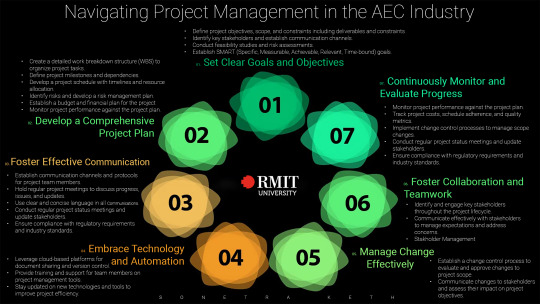
NAVIGATING PROJECT MANAGEMENT IN THE AEC INDUSTRY
Navigating Project Management in the AEC industry involves a series of interconnected tasks that require effective planning, execution, monitoring, and control. By following best practices and leveraging project management methodologies such as APM, SCRUM, KANBAN, or the Traditional WATERFALL Project Management Methodology, the AEC professionals can successfully deliver complex projects while meeting stakeholder expectations and achieving project objectives.
As an architectural manager with a Master of Architecture degree and an architectural engineering degree from reputable institutes, having experience in project and design management for large-scale commercial facilities, multi-story offices, and high-rise administration buildings, I can provide the necessary artifacts to enhance project success, improve team collaboration, and effectively handle project complexities in the architecture, engineering, and construction (AEC) sector.

1. Set Clear Goals and Objectives:
Define project scope, including deliverables and constraints.
Establish SMART (Specific, Measurable, Achievable, Relevant, Time-bound) goals.
Align goals with stakeholder expectations and project requirements.
Obtain buy-in from key stakeholders on project objectives.
2. Develop a Comprehensive Project Plan:
Create a detailed work breakdown structure (WBS) to organize project tasks.
Define project milestones and dependencies.
Develop a project schedule with timelines and resource allocation.
Identify risks and develop a risk management plan.
Establish a budget and financial plan for the project.
3. Foster Effective Communication:
Establish communication channels and protocols for project team members.
Hold regular project meetings to discuss progress, issues, and updates.
Use clear and concise language in all communications.
Encourage open and transparent communication among team members.
Address communication barriers and conflicts promptly.
4. Embrace Technology and Communication:
Utilize project management software for task tracking and collaboration.
Implement communication tools such as emails, instant messaging, and video conferencing.
Leverage cloud-based platforms for document sharing and version control.
Provide training and support for team members on project management tools.
Stay updated on new technologies and tools to improve project efficiency.
5. Manage Change Effectively:
Establish a change control process to evaluate and approve changes to project scope.
Communicate changes to stakeholders and assess their impact on project objectives.
Update project documentation and plans to reflect approved changes.
Monitor changes to prevent scope creep and ensure project alignment with goals.
Evaluate the risks and benefits of proposed changes before implementation.
6. Foster Collaboration and Teamwork:
Encourage team members to share ideas, feedback, and best practices.
Foster a collaborative work environment that values diversity and inclusivity.
Promote team building activities and recognize team achievements.
Facilitate cross-functional collaboration and knowledge sharing.
Resolve conflicts and promote a positive team culture.
7. Continuously Monitor and Evaluate Progress:
Track project performance against key performance indicators (KPIs).
Conduct regular project reviews to assess progress and identify areas for improvement.
Monitor project risks and issues and take corrective actions as needed.
Evaluate project outcomes against initial goals and objectives.
Use lessons learned to make informed decisions and optimize project performance.
By focusing on these subtasks within each point, project managers can enhance project success, improve team collaboration, and effectively manage project complexities in the Architecture, Engineering, and Construction (AEC) industry.
Sonetra KETH (កេត សុនេត្រា)
Architectural Manager/Project Manager/BIM Director
RMIT University Vietnam + Institute of Technology of Cambodia
#Sonetra Keth#Architectural Manager#Architectural Design Manager#BIM Director#BIM Manager#BIM Coordinator#Project Manager#RMIT University Vietnam#Institute of Technology of Cambodia#Real Estate Development#Construction Industry#Building Information Modelling#BIM#AI#Artificial Intelligence#Digitalization#Technology#VDC#Virtual Design#IoT#Internet of Things#Machine Learning#Drones and UAVs#C4R#Collaboration for Revit#Cloud Computing and Collaboration Platforms#NETRA#netra#នេត្រា#កេត សុនេត្រា
0 notes
Text

Autodesk Fusion 360
Autodesk Fusion 360 is a cloud-based 3D modelling, CAD, CAM, CAE and PCB software platform for product design and manufacturing. It connects your entire product development process in a single cloud-based platform that works on both Mac and PC. It combines industrial and mechanical design, simulation, collaboration and machining in a single package.
#Bluebeam Software#Bluebeam#Bluebeam Revu Software#Bluebeam Tool Sets#Autodesk Dublin#Autodesk Ireland#Autocad Course#Autocad Courses#Autodesk Software#BIM Course#Revit Course#Revit Courses#Revit Training Courses#BIM Consultation#Autocad LT#Autocad#BIM 360#Bim Collaborate Pro#Autodesk Build#Autodesk Construction Cloud#Autodesk Docs#Autodesk Fusion 360#Autodesk Inventor#Autodesk Revit#Autodesk Vault
1 note
·
View note
Text
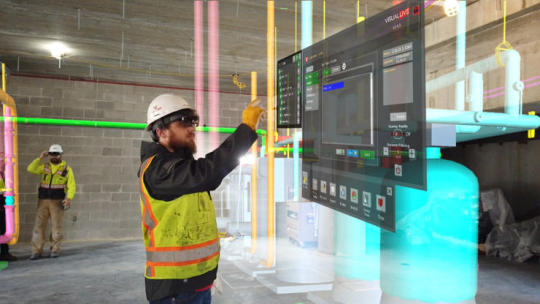
Unity's Augmented Reality Revolutionizes Construction with VisualLive
Unity's Augmented Reality for Construction software VisualLive, allows real-time 3D visualisation, collaboration, and field-to-office communication across all stages of construction. These include design review, quality assurance/control, facilities management, and more.The software works by overlaying large BIM and CAD files onto job sites using augmented reality, allowing construction professionals to visualise designs and collaborate in real-time.
#Augmented Reality for Construction#AEC Collection#Autocad electrical#Autodesk Assemble#BIM Collaborate Pro#Autodesk Build#Autodesk Construction Cloud#Autodesk Docs#Autodesk software#Autodesk Takeoff#Twinmotion for Revit#Twinmotion revit#BIM 360#BIM 360 Docs#Civil 3D
0 notes
Text
Transformers Join Library Card Sign-Up Month Celebration!

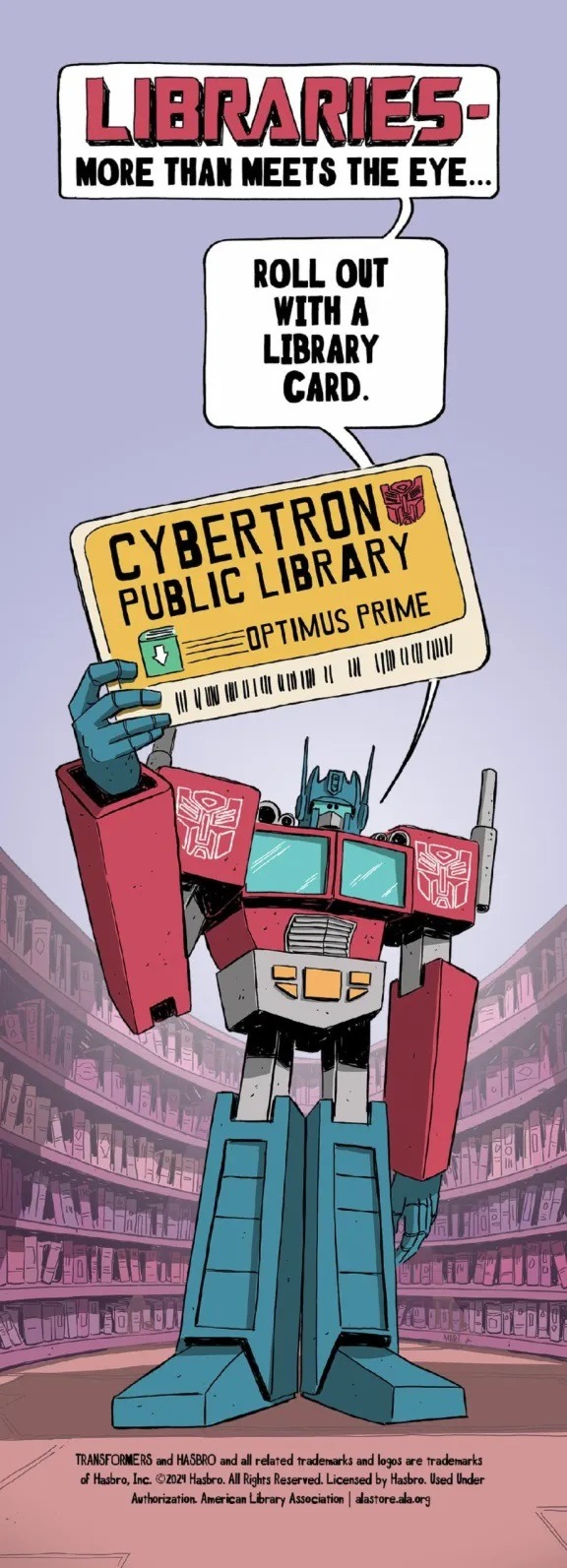
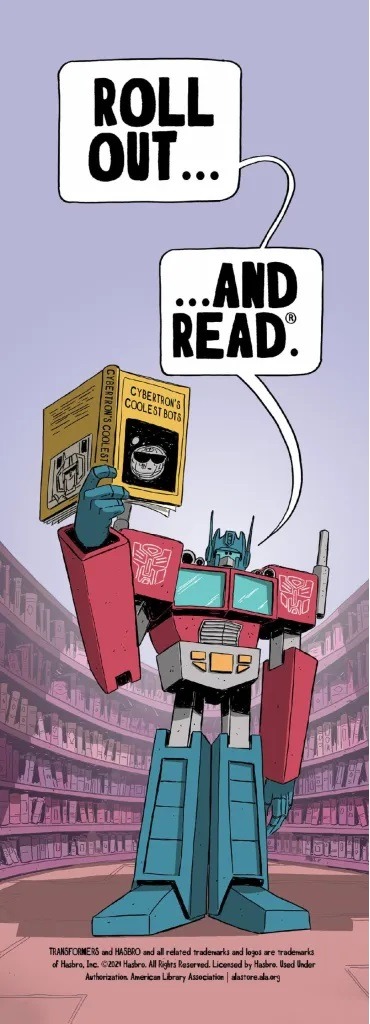
Skybound Entertainment, the American Library Association (ALA), and Hasbro are teaming up to celebrate Library Card Sign-Up Month in September with an exciting collaboration featuring the beloved Transformers franchise, led by the iconic Optimus Prime.
ALA President Emily Drabinski expressed excitement about the partnership, highlighting the importance of libraries in fostering creativity and critical thinking skills for both Autobots and humans alike. Posters and bookmarks featuring Optimus Prime with a library card will be available in the ALA store, along with free Library Card Sign-up Month graphics and media tools to promote the initiative.
Arune Singh, VP of Brand and Editorial at Skybound Entertainment, emphasized the significance of libraries in communities, emphasizing the message of respect and inclusivity championed by Optimus Prime. Singh expressed Skybound's enthusiasm for collaborating with ALA to support local libraries and encourage reading among all sentient beings.
As part of the collaboration, Skybound and Image Comics will release new comic book and graphic novel collections based on the Transformers series throughout the year, commemorating the franchise's 40th anniversary with "40 Years. One Legacy." Additionally, a new graphic novel compendium series collecting the landmark Transformers series from Marvel Comics is set to launch in Fall 2024.
The partnership between Hasbro and Skybound, which began last summer, has revitalized the Transformers and G.I. Joe franchises with a new comic book series set in the Energon Universe. These include titles like "Void Rivals," "TRANSFORMERS," "Duke," and "Cobra Commander," with new limited series like "Scarlett" and "Destro" launching in June. These graphic novels are available in libraries nationwide, with more releases planned throughout the year.
#transformers#skybound universe#energon universe#books & libraries#american library association#image comics#optimus prime#skybound entertainment#skybound
23 notes
·
View notes
Text
Why Capcom should sell the MegaMan rights to Sega and How Sega should reboot and reimagine MegaMan
There are several reasons why Capcom should consider selling the MegaMan rights to Sega:
1. Revitalizing the franchise: Sega has a strong track record of successfully revitalizing classic franchises, such as Sonic the Hedgehog. By acquiring the MegaMan rights, Sega can bring fresh ideas and innovative gameplay mechanics to breathe new life into the series. This would attract both old and new fans, ensuring the longevity and relevance of MegaMan in the gaming industry.
2. Expertise in platformers: Sega has extensive experience in developing platformer games, which is the genre MegaMan primarily belongs to. With iconic titles like Sonic the Hedgehog and Alex Kidd, Sega has proven its ability to create engaging and enjoyable platforming experiences. This expertise can be leveraged to create high-quality MegaMan games that stay true to the franchise's roots while introducing exciting new gameplay elements.
3. Collaborative opportunities: Sega's strong relationships with other developers and publishers could open up collaborative opportunities for MegaMan. Sega has a history of successful partnerships, such as the Sonic and Mario crossover games with Nintendo. By collaborating with other popular characters or franchises, MegaMan can reach a wider audience and generate even more interest and excitement among gamers.
4. Global reach and marketing prowess: Sega has a global presence and a well-established marketing infrastructure. By acquiring the MegaMan rights, Sega can leverage its marketing expertise to promote the franchise effectively worldwide. This would ensure maximum exposure and awareness for MegaMan, leading to increased sales and a larger fanbase.
5. A fresh perspective: Capcom has been the sole custodian of the MegaMan franchise for many years. By selling the rights to Sega, the franchise can benefit from a fresh perspective and new creative direction. Sega's different approach to game development can inject new ideas into MegaMan, resulting in unique and exciting experiences for players.
Overall, selling the MegaMan rights to Sega would not only benefit Capcom financially but also ensure the franchise's continued success and relevance in the gaming industry. Sega's expertise in platformers, collaborative opportunities, global reach, marketing prowess, and fresh perspective make them an ideal candidate to take the MegaMan franchise to new heights.
Sega has a rich history of creating iconic and beloved video game franchises, and if they were to reboot and reimagine MegaMan, they could bring a fresh perspective to the series. Here are a few ideas on how Sega could approach this task:
1. Visual Overhaul: One of the first things Sega could do is give MegaMan a visual makeover. They could adopt a more modern and detailed art style, while still paying homage to the classic design of the character. This would help to attract new players while also appealing to long-time fans.
2. Expanded Storytelling: Sega could take advantage of their expertise in storytelling and create a more intricate and engaging narrative for MegaMan. They could explore the origins of MegaMan and his creator, Dr. Light, in greater depth, adding layers of complexity to the characters and their relationships. Additionally, they could introduce new villains and allies, providing a fresh and exciting twist to the storyline.
3. Enhanced Gameplay Mechanics: Sega could introduce new gameplay mechanics that would add depth and variety to the MegaMan experience. They could incorporate elements from other successful Sega franchises, such as Sonic the Hedgehog's speed and platforming mechanics or the strategic combat of the Valkyria Chronicles series. This would not only make the gameplay more engaging but also differentiate the rebooted MegaMan from its predecessors.
4. Open-World Exploration: Sega could reimagine MegaMan as an open-world game, allowing players to freely explore a vast and interconnected world. This would provide a sense of adventure and discovery, as players could uncover hidden areas, complete side quests, and encounter unique challenges. The open-world format would also allow for a more immersive and dynamic gameplay experience.
5. Multiplayer and Online Features: Sega could introduce multiplayer and online features to the rebooted MegaMan. They could include co-op gameplay, where players can team up with friends to take on challenging missions or compete in online leaderboards to showcase their skills. This would add a social aspect to the game and extend its longevity.
6. Cross-Platform Compatibility: To maximize the reach and accessibility of the rebooted MegaMan, Sega could ensure cross-platform compatibility. This would allow players to enjoy the game on various platforms, such as consoles, PCs, and mobile devices, enabling a larger player base and fostering a vibrant community.
Overall, Sega has the potential to breathe new life into the MegaMan franchise by rebooting and reimagining it with their unique approach. By combining stunning visuals, compelling storytelling, innovative gameplay mechanics, and multiplayer features, Sega could create a MegaMan experience that captivates both old and new fans alike.
#mega man#megaman zero#megaman x#megaman#megaman (classic)#megaman (classic) [reboot]#megaman zero [reboot]#megaman x [reboot]#megaman reboot
22 notes
·
View notes
Text
It's been 2 years since SOLARIA release!
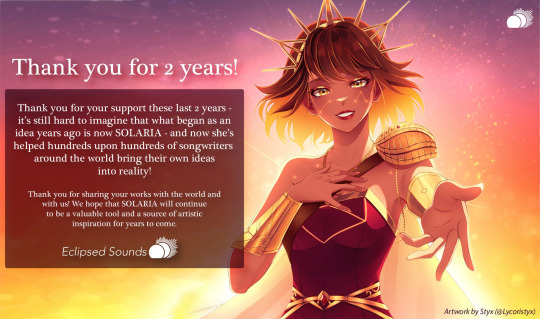
Message from Eclipsed Sounds official Twitter:
Thank you for 2 years of SOLARIA, and by extension, Eclipsed Sounds as a whole! We hope she will continue to be a reliable partner for songwriters everywhere year after year.
Thank you to Lycoristyx for this incredible artwork to celebrate SOLARIA's second anniversary! We will have a new demo song for SOLARIA as part of a much-requested collaboration mid-next week, so please look forward to it!
The SUNDIAL album project will also be revitalized after our presence at the NAMM show, as most of our team will be able to work full-time for Eclipsed Sounds then. We are working on producing additional extras for the album to compensate for the delays. Thank you.
#SOLARIA#eclipsed sounds#solaria synthv#synthesizer v#synthesizerv#synthv#synthv news#vocaloid#synthv ai#vocal synths#vocal synth#hatsune miku#voicepeak
28 notes
·
View notes
Text
Coffee Project: Where Coffee Meets Art and Inspiration

Infusing the passion for coffee with the aesthetics of art and design, Coffee Project offers an experience unlike any other coffee shop. The instant you walk through the door, you're whisked away to a fantastical realm where imagination and coffee meet. Coffee Project is a carefully managed setting that inspires and uplifts with its lush vegetation, rustic furniture, and charming décor.
The meticulous crafting of Coffee Project is one of its most alluring qualities. There is artwork in every corner and crevice, from the elaborate wallpaper to the captivating light fixtures. It's the kind of place where you can go for a coffee and a chat with a friend or to curl up with a good book in peace and quiet. Coffee Project has a number of different seating arrangements, from intimate nooks to lively community tables, to accommodate its customers.
The coffee is the main attraction of Coffee Project. The café takes pride in its excellent service and the delicious variety of specialty coffees it provides. Every kind of coffee drink imaginable exists, from traditional espresso-based beverages to extravagant and fanciful specialized concoctions. It's impossible to have a bad meal when you pair your coffee with one of their delicious pastries or brunch options.
Coffee Project encourages collaboration and innovation in addition to its aesthetic appeal and tasty beverages. It's a meeting place for creative types, where ideas may flourish and creativity can flourish. Coffee Project is a haven where you may escape the stresses of everyday life and find inspiration in the worlds of art and design while enjoying some of the best coffee around.
So whether you're in need of some motivation, a well brewed cup of coffee, or just a calm and relaxing place to hang out, Coffee Project Cafe is the place to go. It's not just a place to get your caffeine fix; it's an adventure that will leave you feeling refreshed and revitalized from the inside out.
Facebook: Coffee Project
Instagram: @coffeeprojectofficial
Disclaimer: All pictures shown are mine and self photograph
56 notes
·
View notes